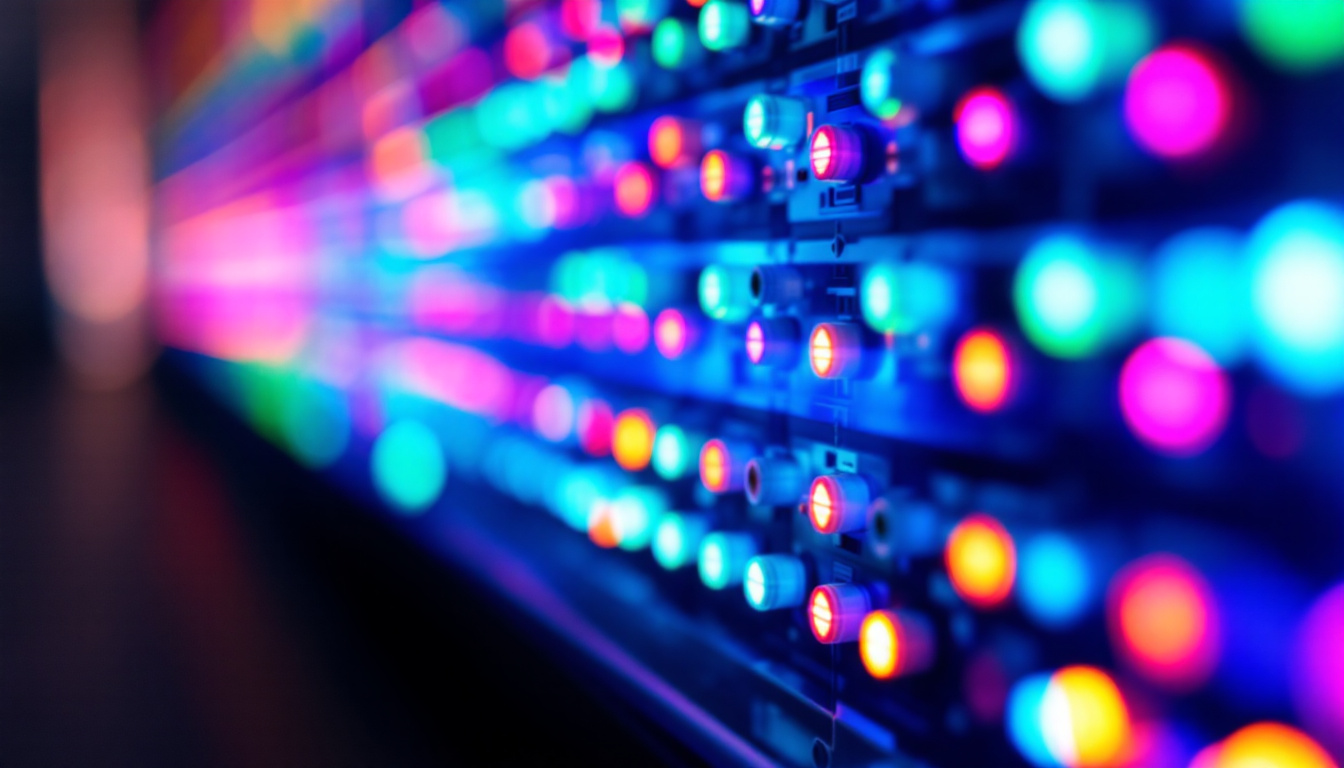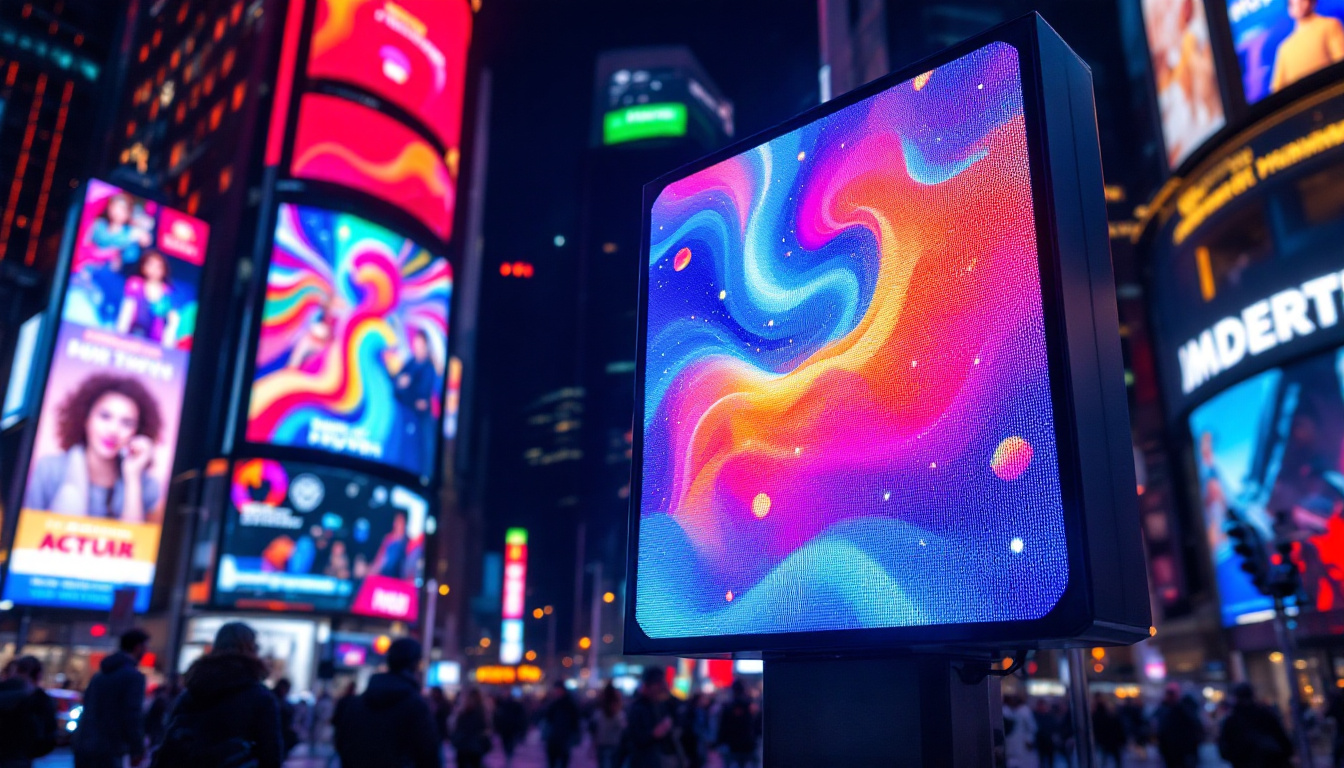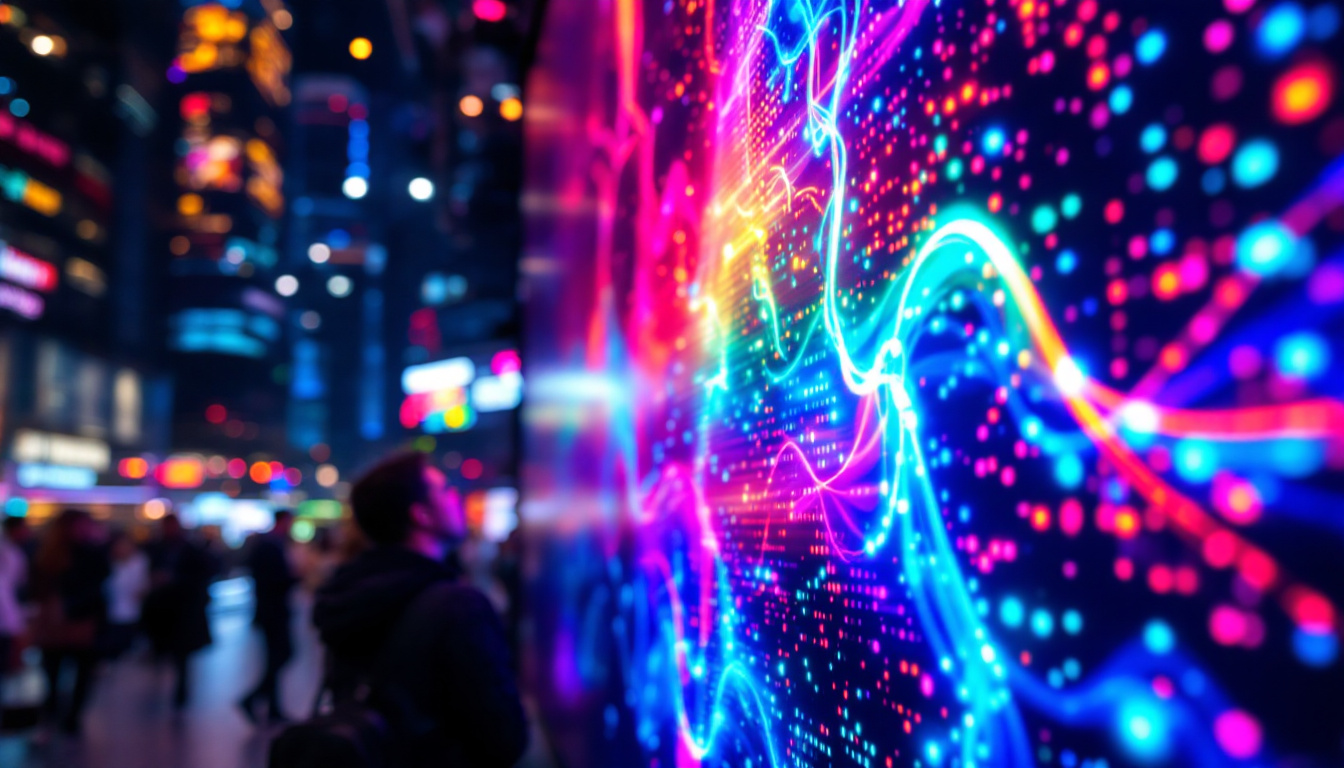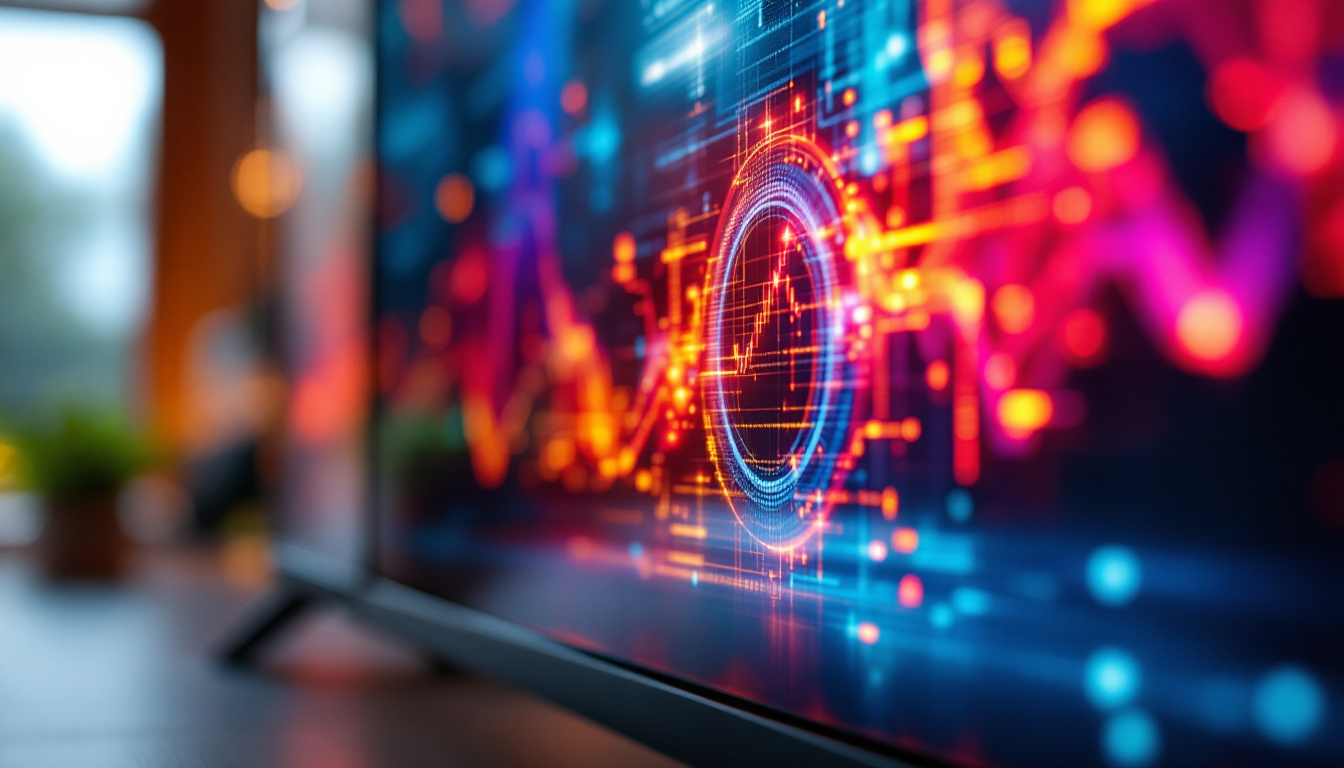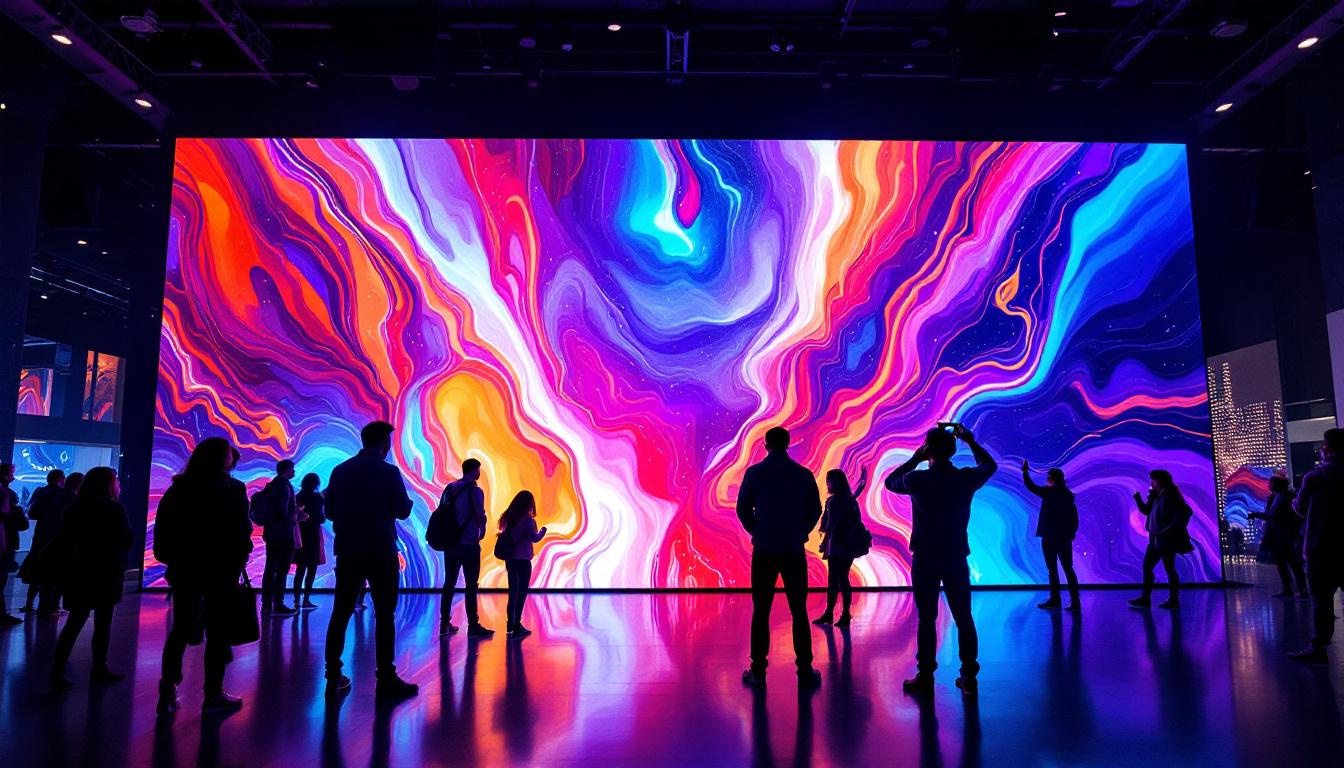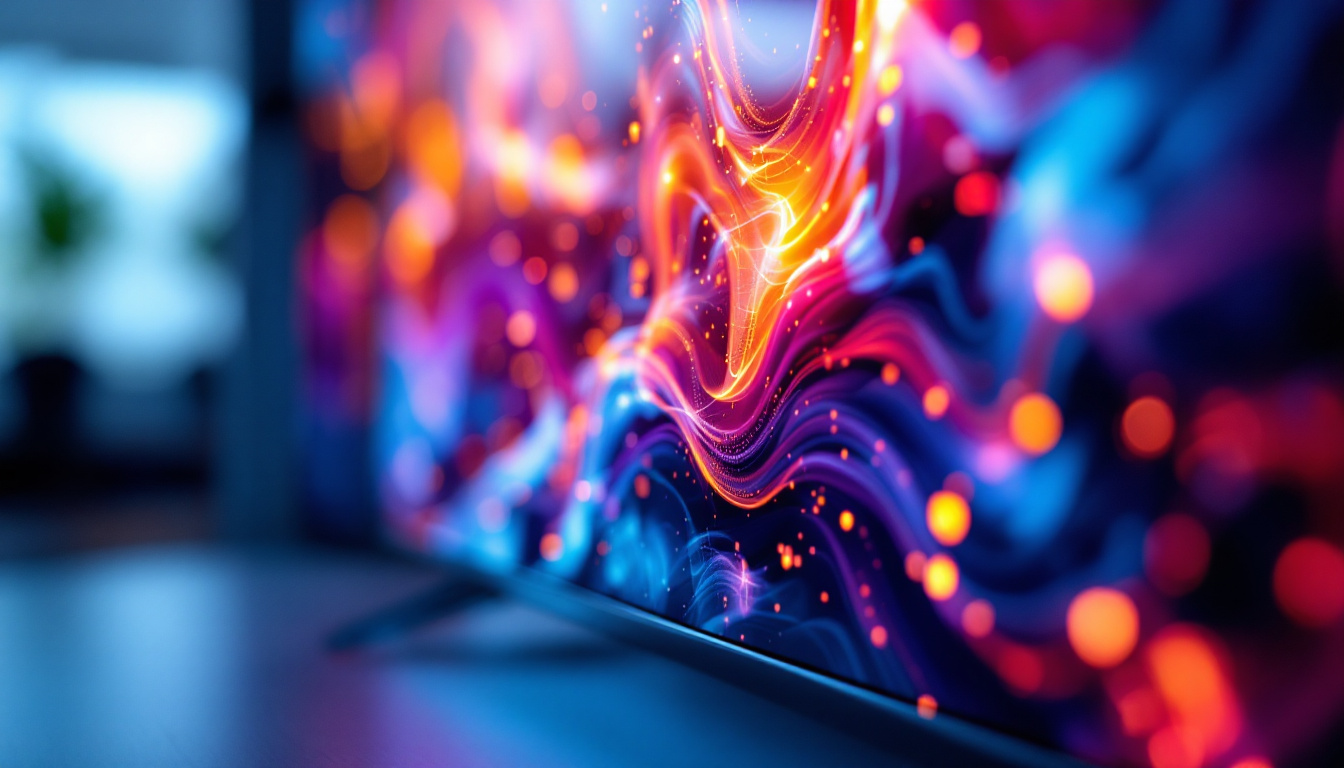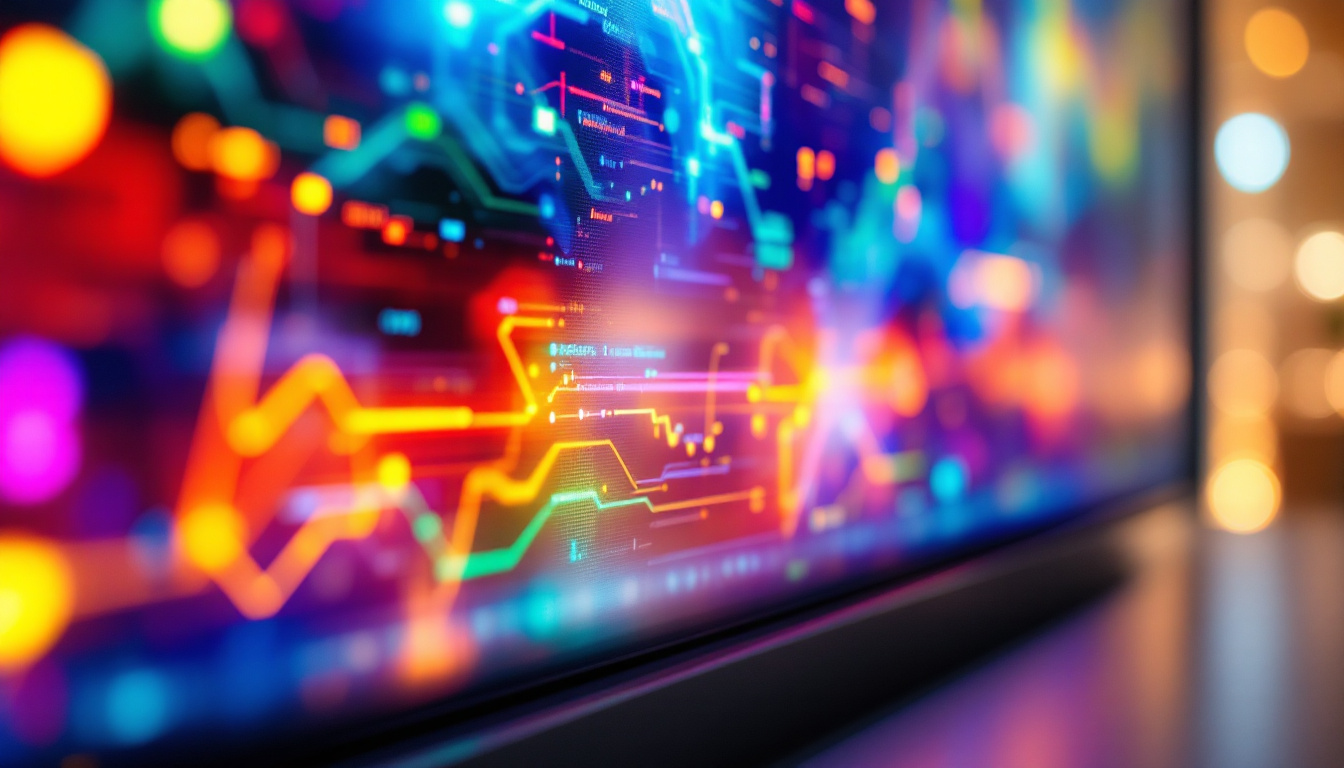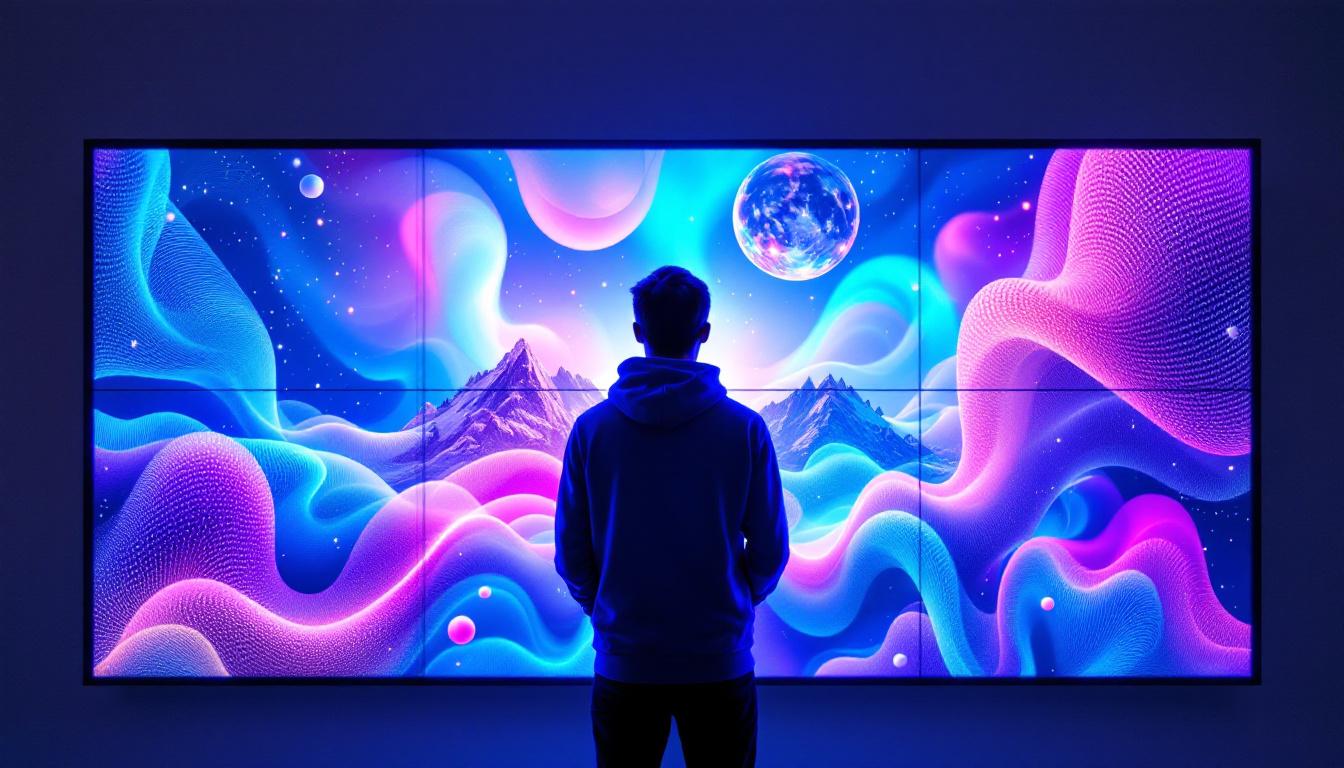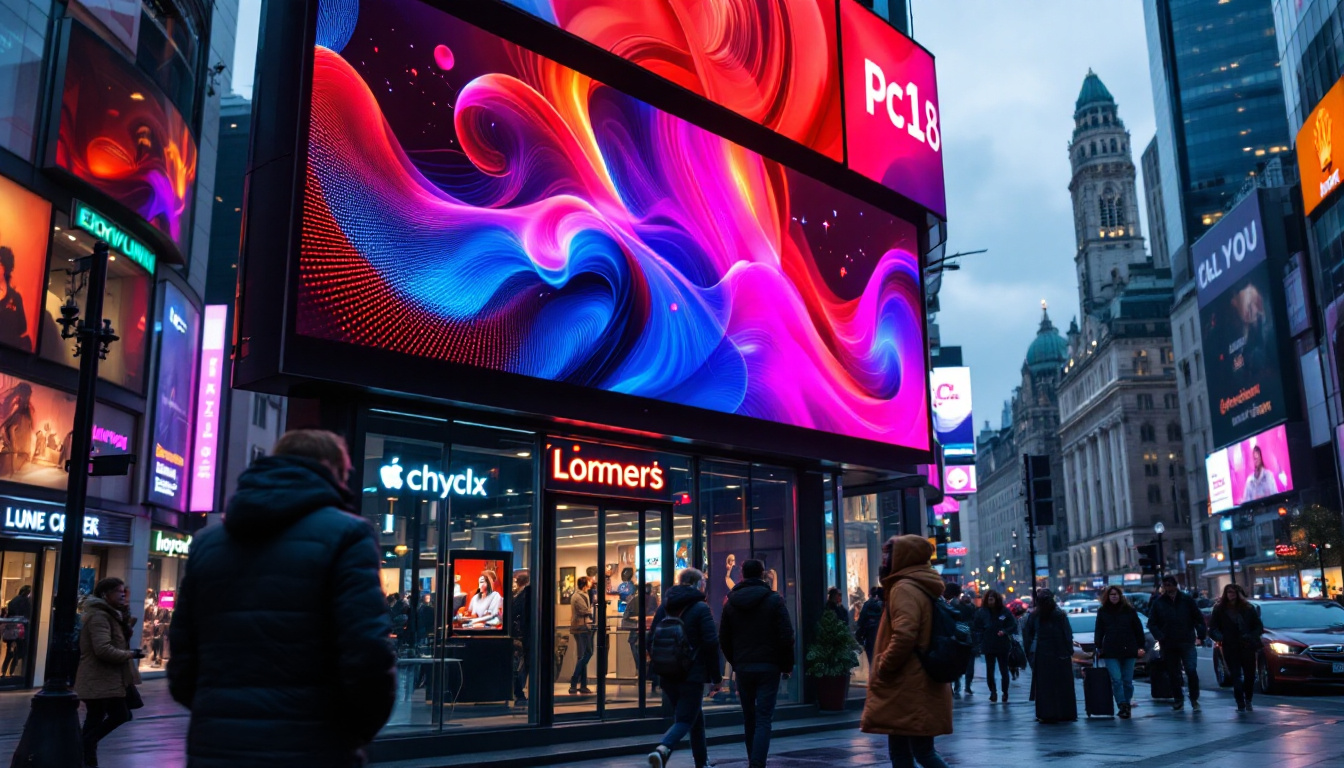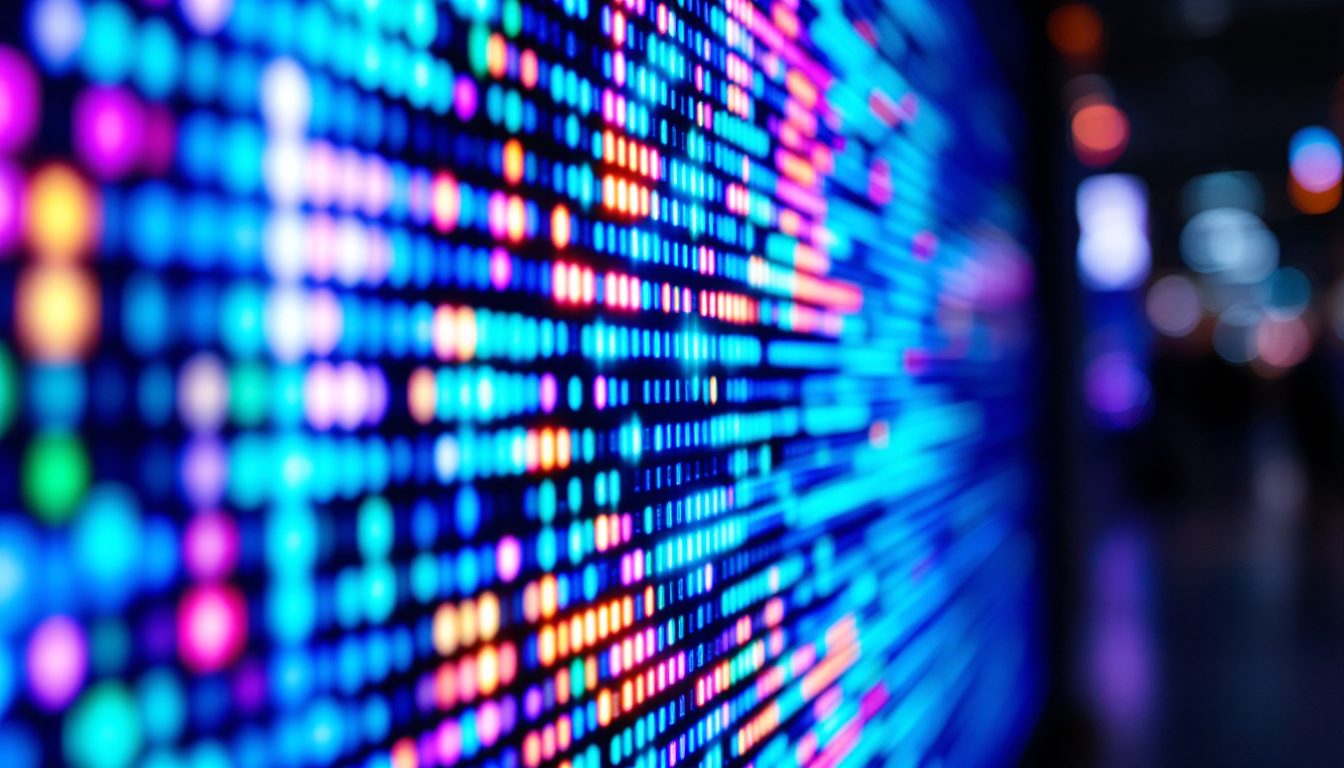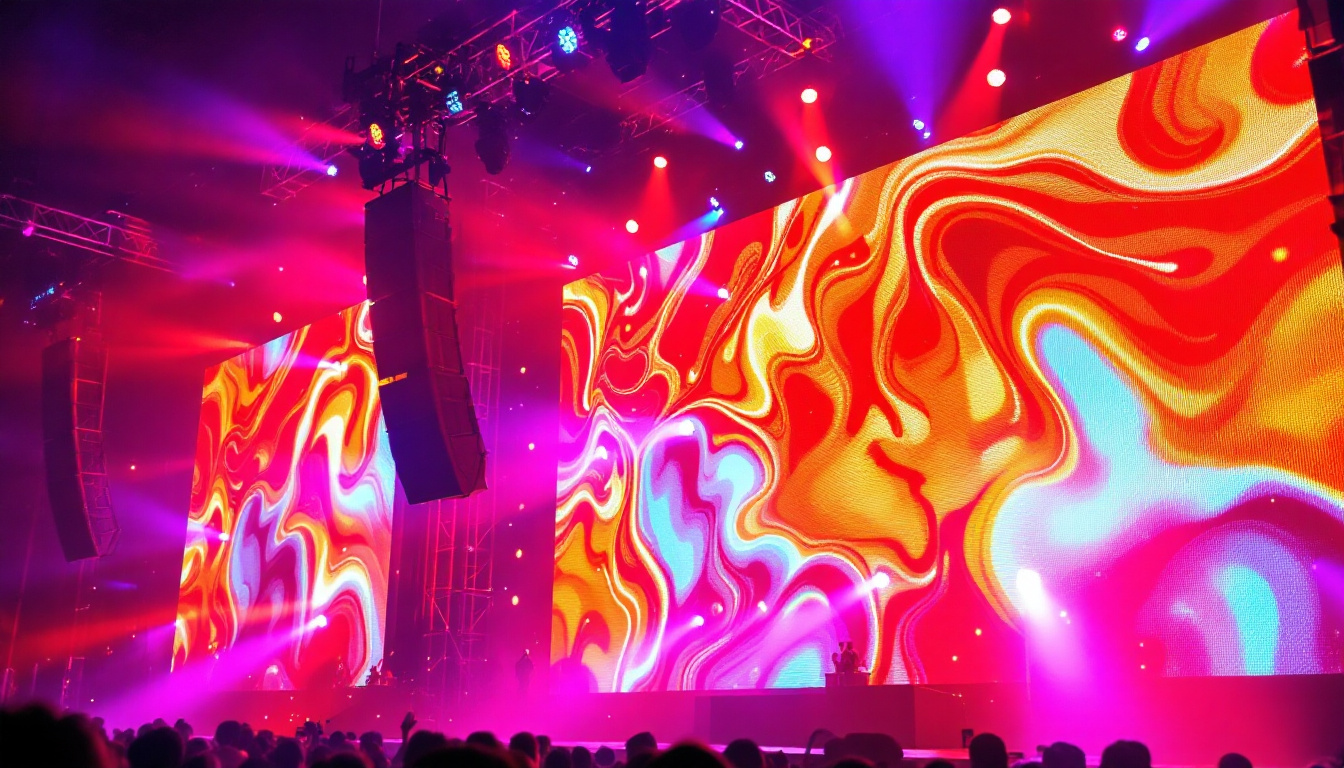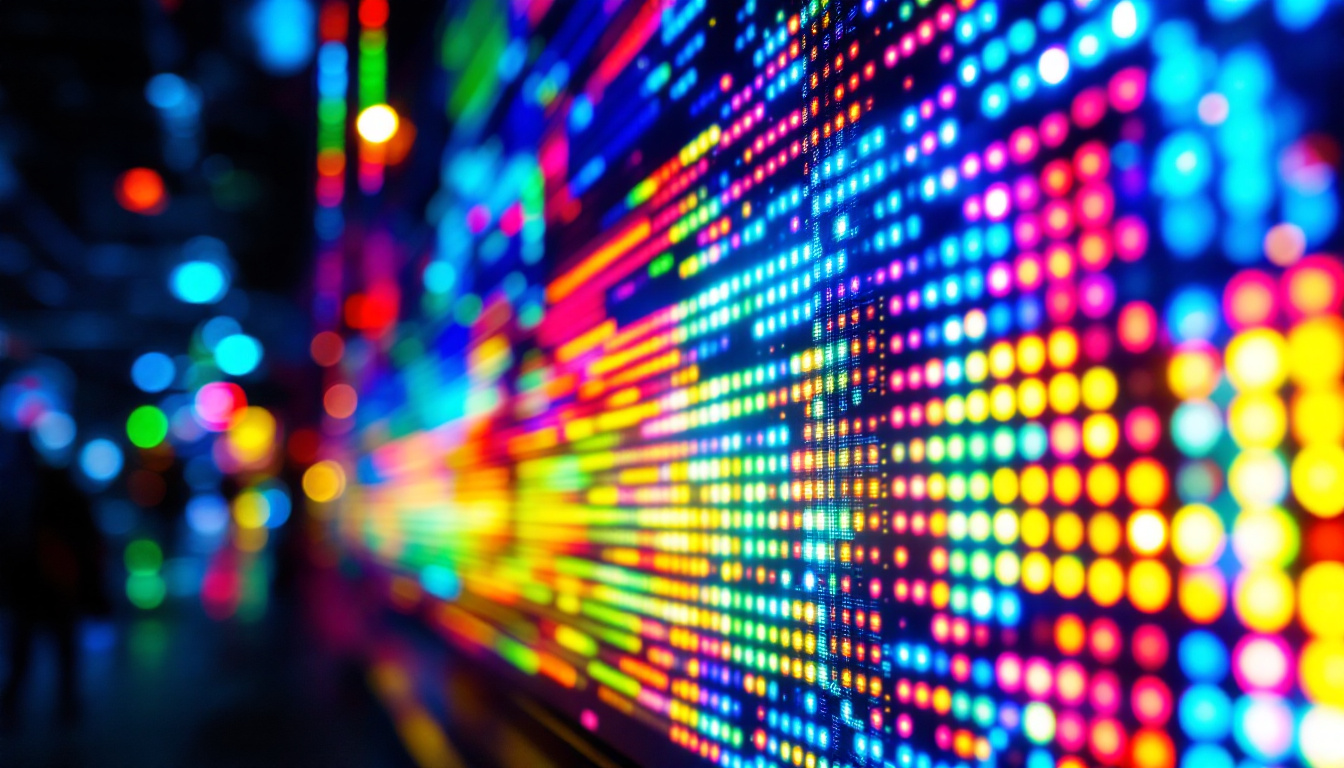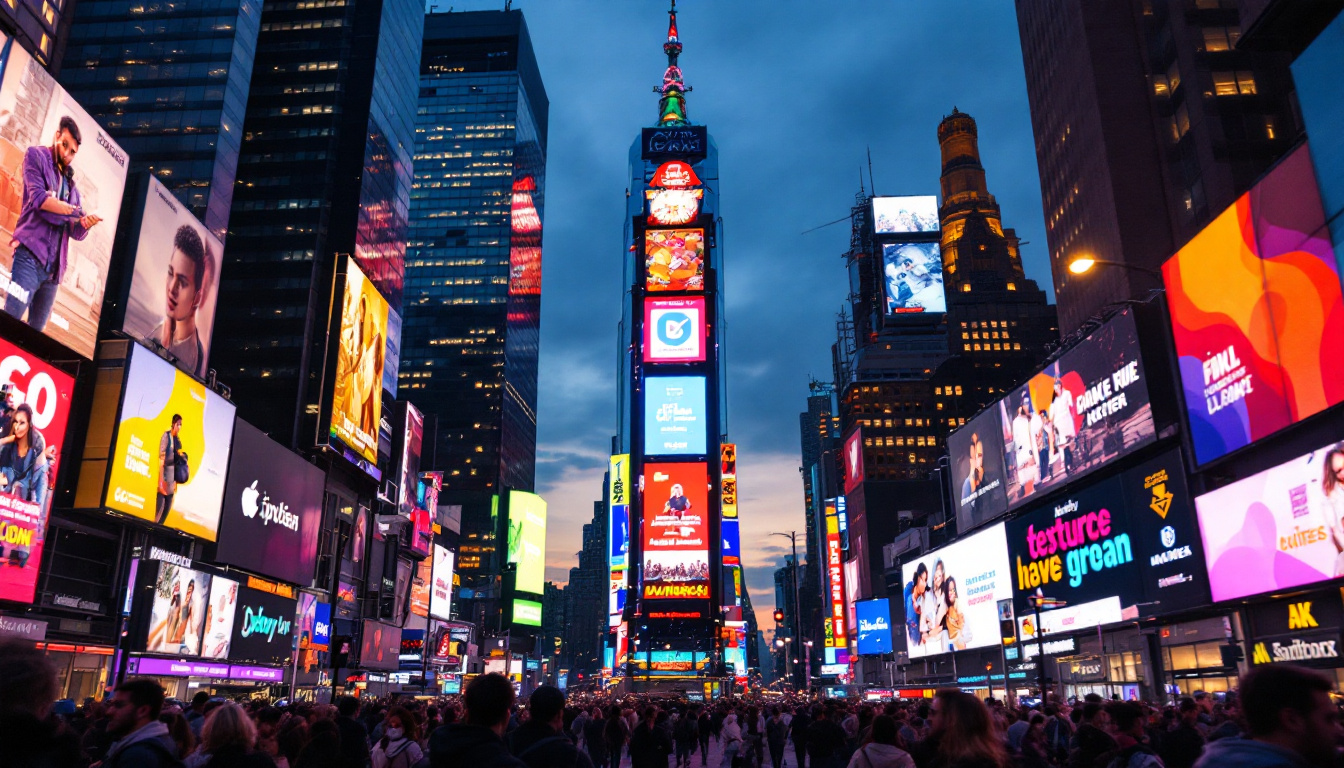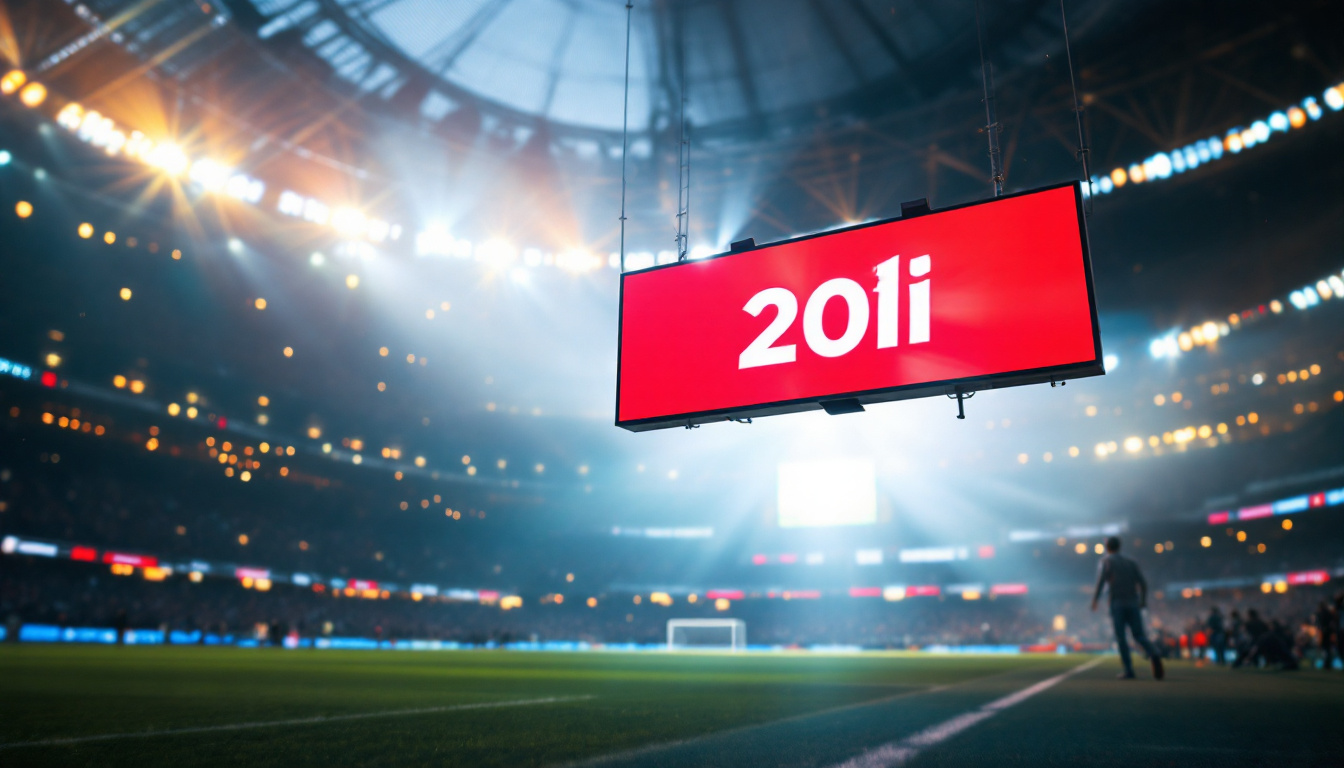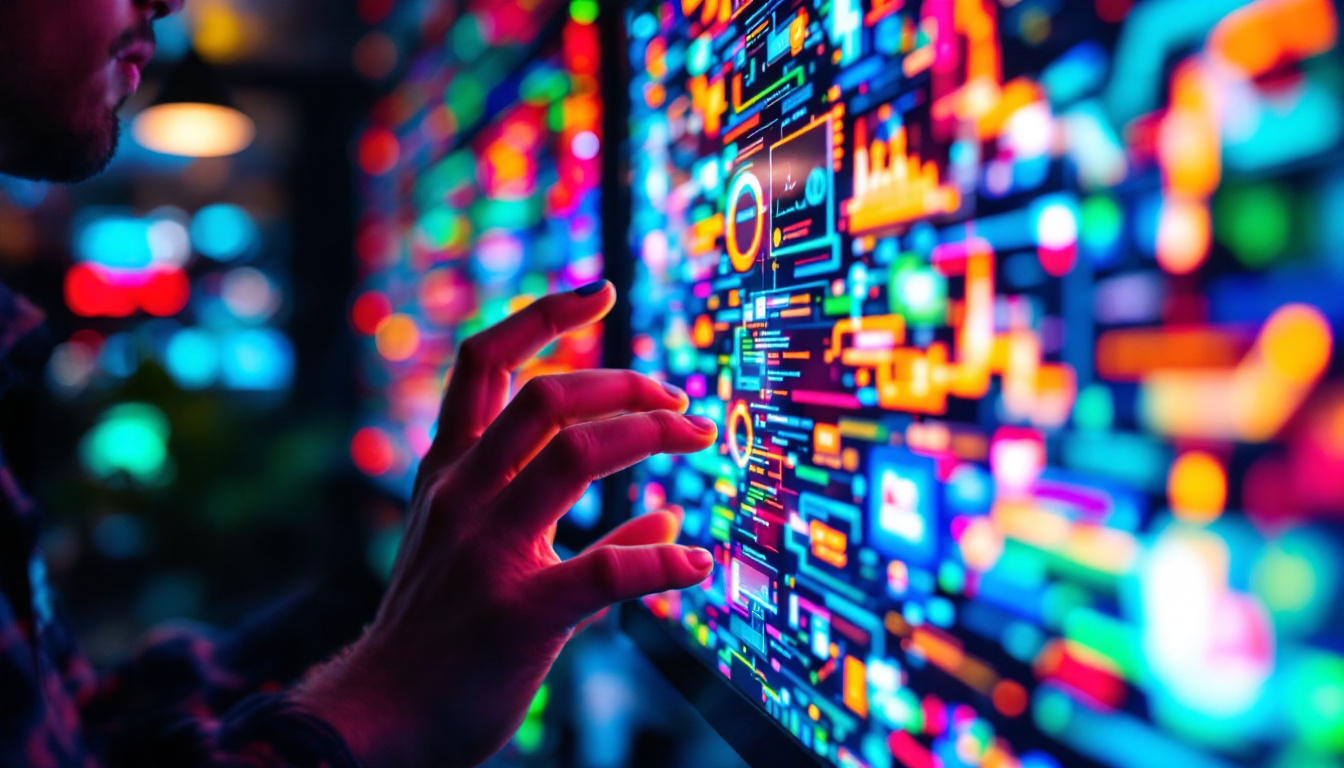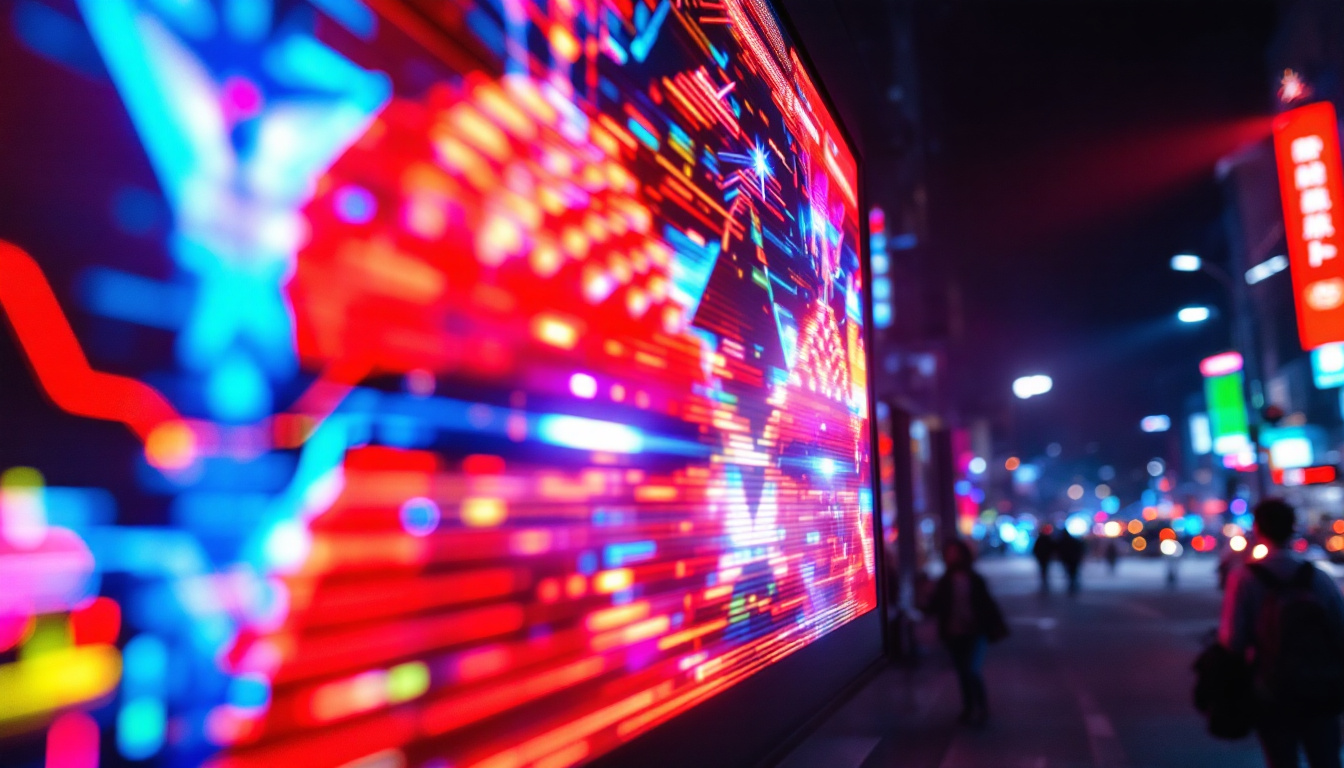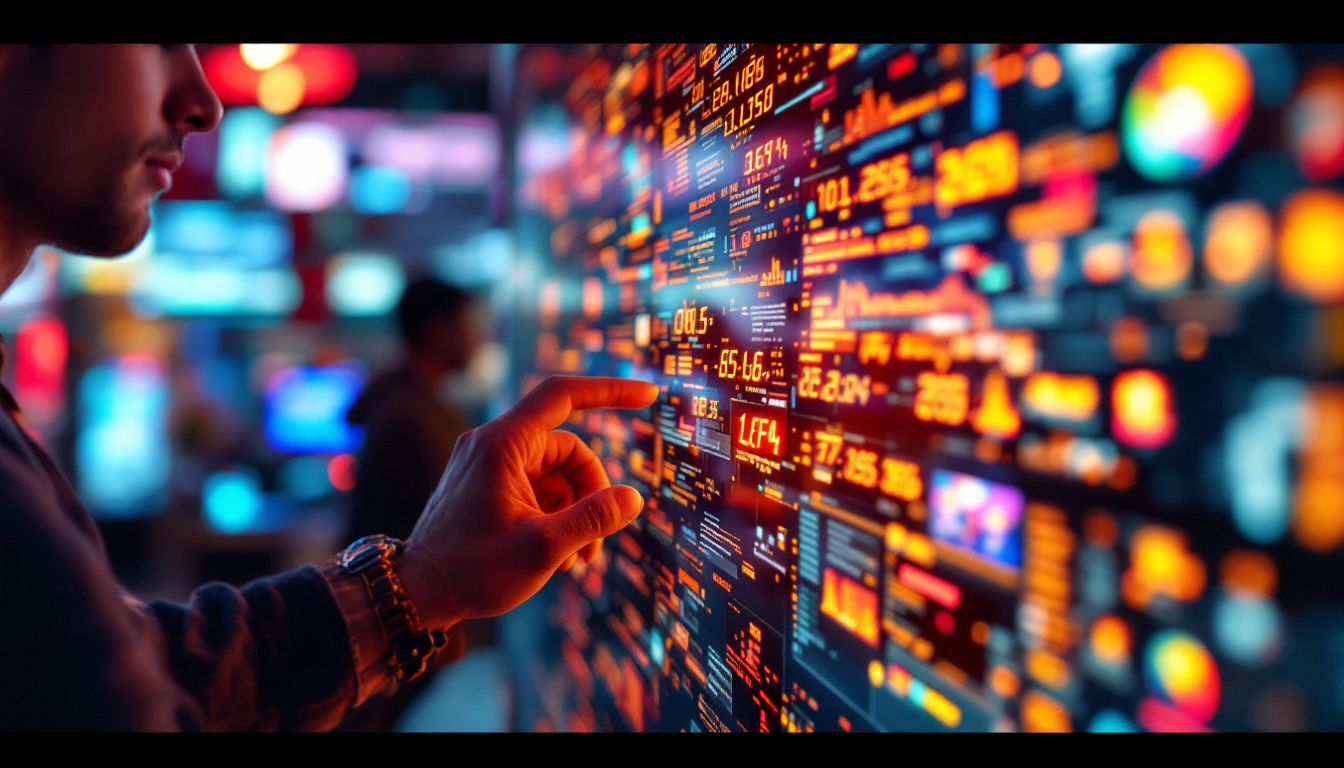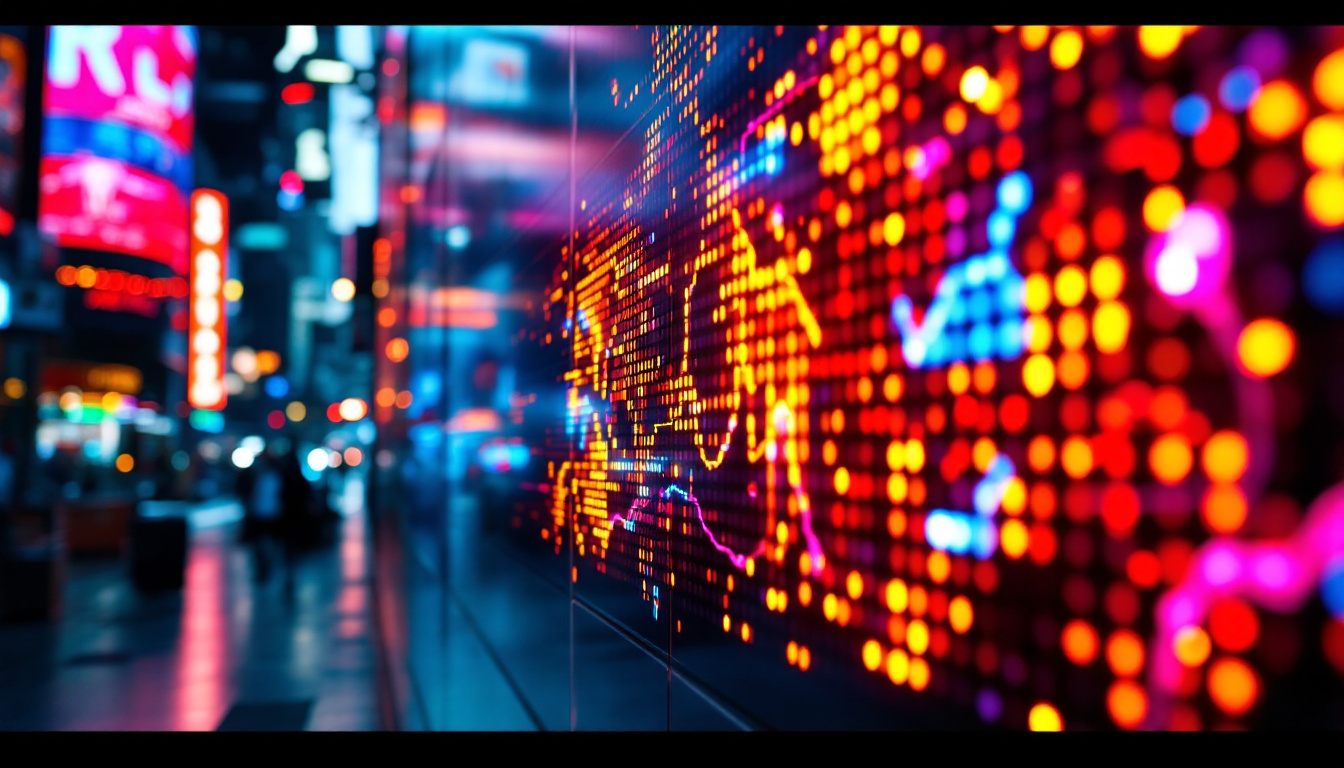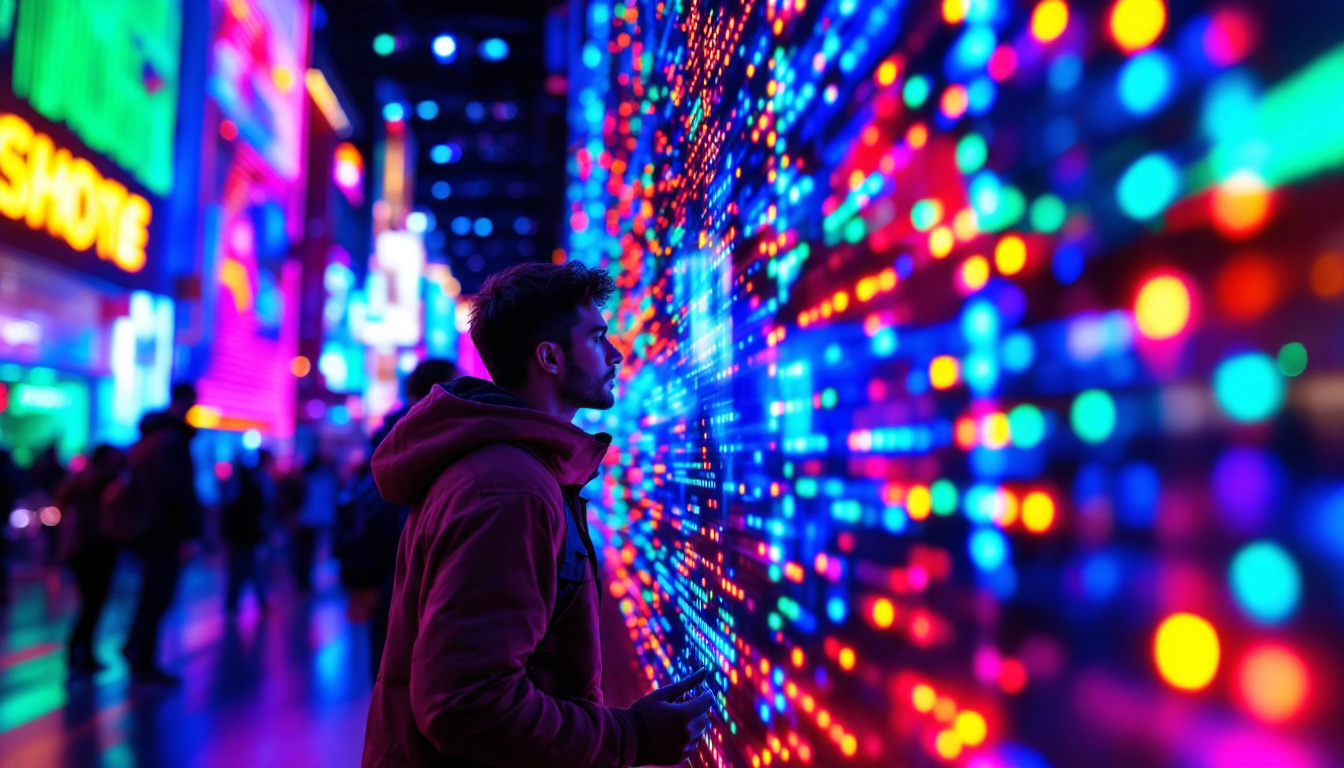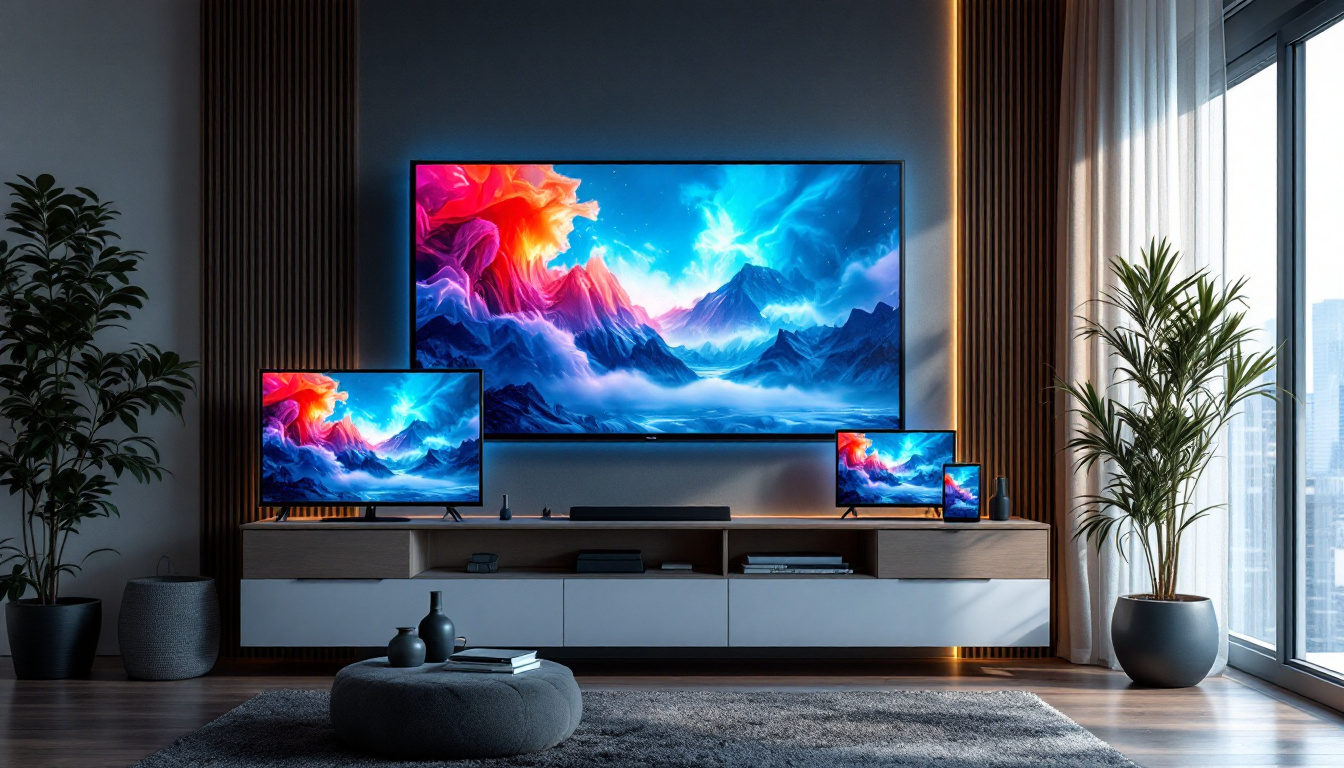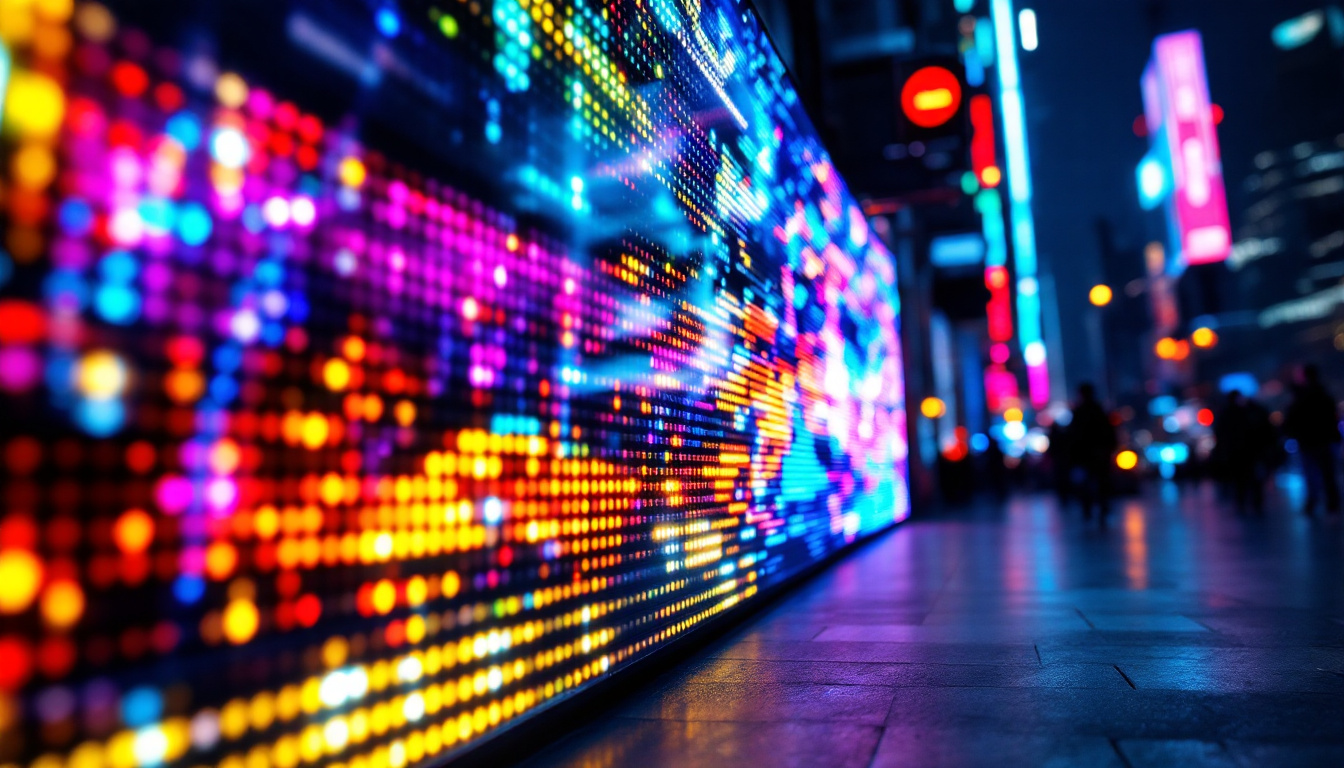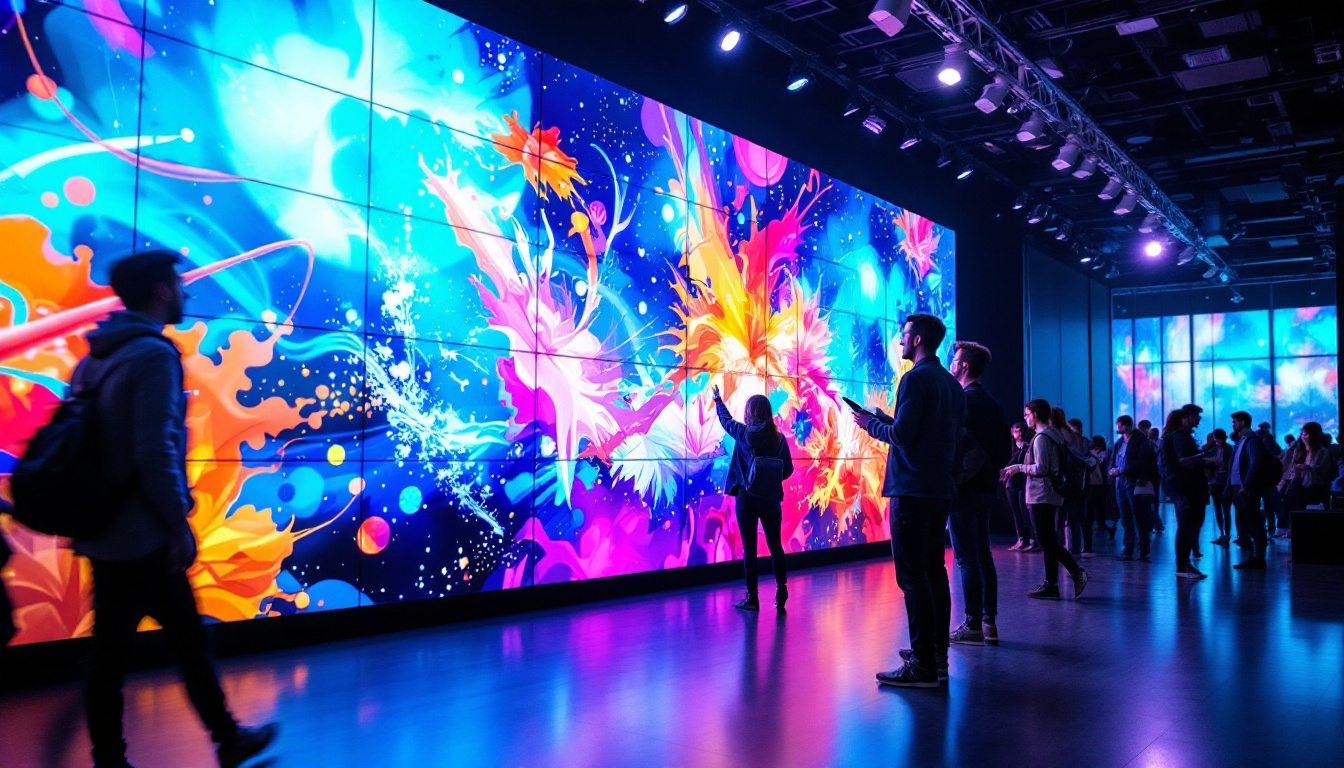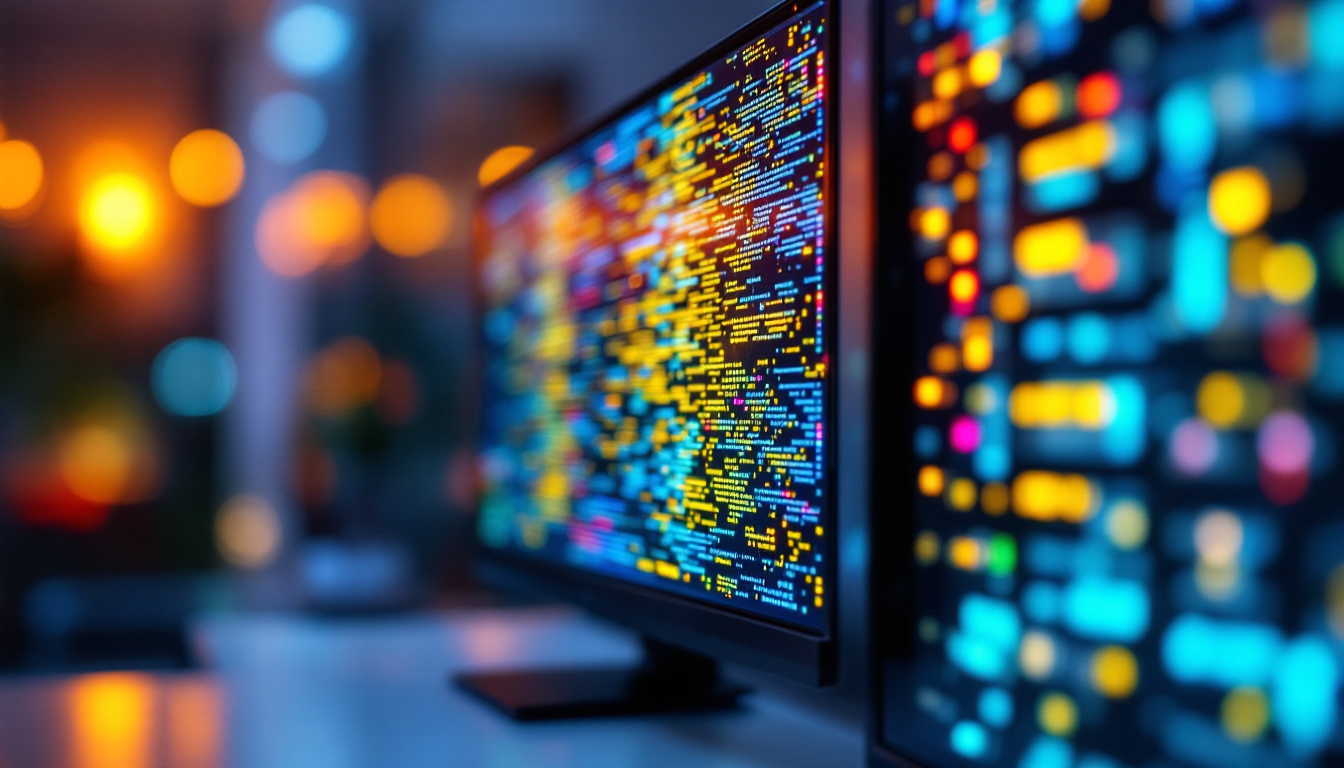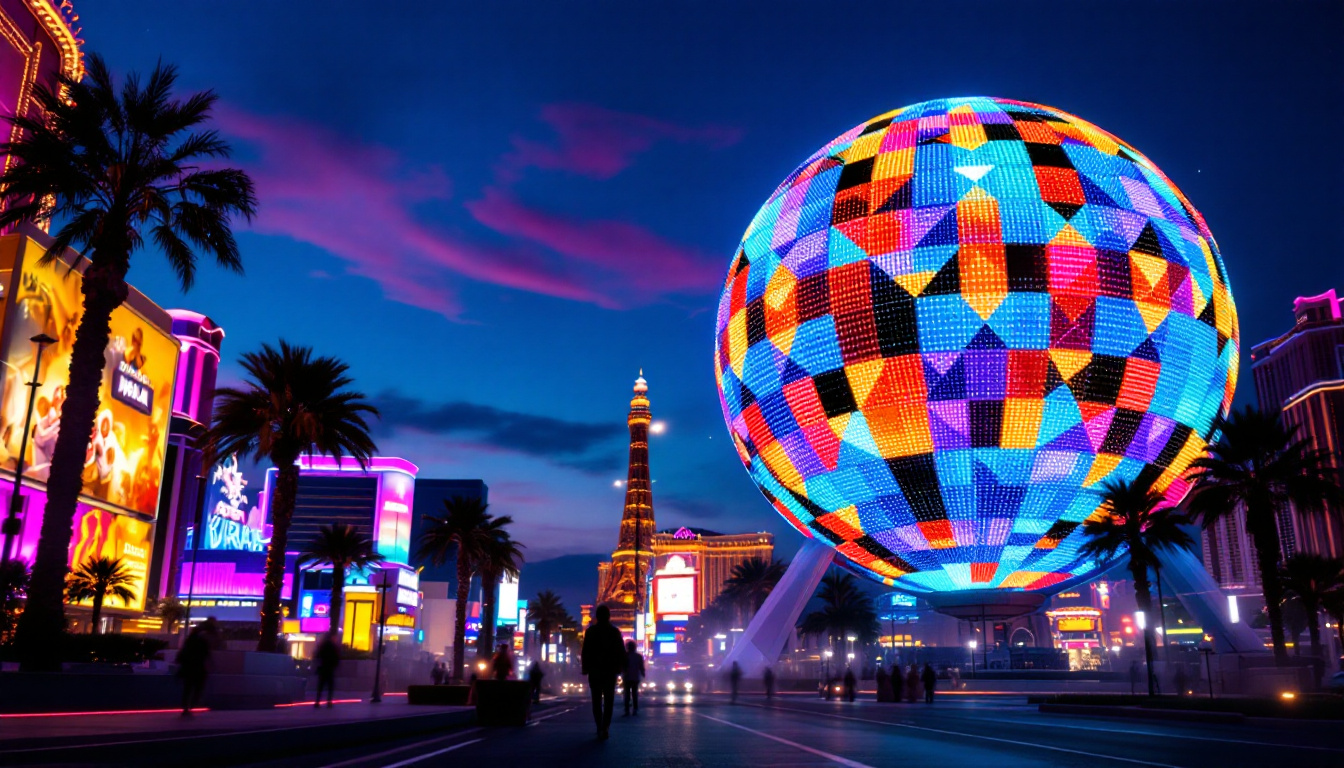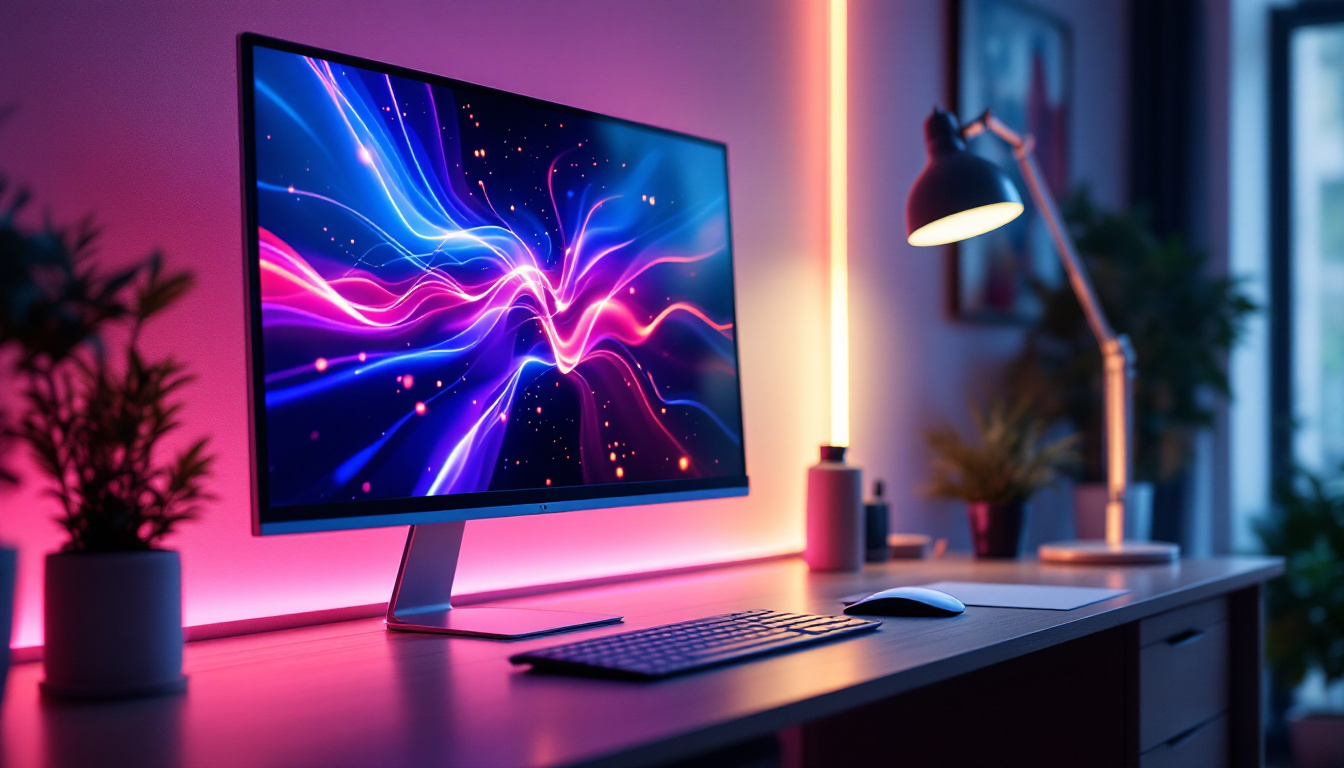In recent years, LED displays have become ubiquitous, transforming the way information is presented across various industries. From advertising billboards to television screens, the application of LED technology is vast and diverse. This article aims to delve into the intricacies of LED displays, exploring their functioning, advantages, and various applications.
Understanding LED Technology
LED, or Light Emitting Diode, is a semiconductor device that emits light when an electric current passes through it. The technology has evolved significantly since its inception, leading to the development of vibrant and efficient displays. The basic principle behind LED technology involves electroluminescence, where electrons recombine with holes within the device, releasing energy in the form of photons. This phenomenon was first discovered in the early 20th century, but it wasn’t until the 1960s that practical applications began to emerge, primarily in the form of indicator lights and simple displays. Over the years, advancements in materials and manufacturing processes have allowed for the creation of LEDs that are not only brighter but also more energy-efficient, paving the way for their widespread adoption in various sectors.
The Components of an LED Display
An LED display is composed of several key components that work together to produce images and videos. The primary components include:
- LEDs: The individual light-emitting diodes that create the display.
- Driver Circuitry: This regulates the power supplied to the LEDs, ensuring consistent brightness and color accuracy.
- Control System: This component manages the input signals and translates them into visual output on the display.
Each of these components plays a crucial role in determining the overall performance and quality of the LED display. For instance, the driver circuitry not only controls the brightness but also influences the longevity of the LEDs, as improper voltage can lead to premature failure. Moreover, the control system can vary in complexity, from simple systems that handle basic on/off signals to sophisticated setups that allow for dynamic content and real-time adjustments based on ambient light conditions. This versatility makes LED displays suitable for a wide range of applications, from advertising billboards to intricate stage backdrops.
Types of LED Displays
LED displays can be categorized into several types, each suited for specific applications:
- Direct View LED: These displays use individual LEDs to create images and are commonly found in large outdoor screens.
- LED Backlit LCD: In this type, LEDs are used to illuminate an LCD panel, providing better contrast and color accuracy than traditional backlighting methods.
- Organic LED (OLED): These displays utilize organic compounds that emit light, allowing for thinner screens and better color reproduction.
Understanding these types helps in selecting the right display for particular needs, whether for commercial use or personal enjoyment. Direct View LEDs are particularly popular for outdoor advertising due to their high brightness and visibility in direct sunlight, while OLED technology is increasingly favored in consumer electronics for its ability to produce deep blacks and vibrant colors. Additionally, advancements in MicroLED technology are emerging, promising even greater efficiency and flexibility, allowing for displays that can be seamlessly integrated into various environments, from homes to retail spaces. As the technology continues to evolve, the possibilities for LED displays are expanding, bringing forth innovative designs and applications that were once thought to be unattainable.
Advantages of LED Displays
LED displays offer numerous advantages over traditional display technologies, making them a preferred choice in many scenarios. Some of the key benefits include:
Energy Efficiency
One of the most significant advantages of LED technology is its energy efficiency. LED displays consume considerably less power compared to traditional incandescent or fluorescent displays. This not only reduces electricity costs but also makes them more environmentally friendly. Furthermore, the lower energy consumption translates to reduced heat generation, which can lead to less strain on air conditioning systems in commercial settings, ultimately contributing to further energy savings.
Brightness and Visibility
LED displays are known for their exceptional brightness, making them ideal for outdoor applications where sunlight can diminish visibility. The high luminosity of LEDs ensures that content remains clear and vibrant, even in direct sunlight. This characteristic is particularly beneficial for advertising and informational displays in busy urban environments, where competition for attention is fierce. The ability to adjust brightness levels automatically based on ambient light conditions also enhances the viewing experience, ensuring optimal visibility at all times.
Longevity and Durability
LED displays have a longer lifespan compared to other display technologies. With an operational life of up to 100,000 hours, they require less frequent replacements. Additionally, their robust construction makes them resistant to shocks and vibrations, further enhancing their durability. This resilience is especially valuable in high-traffic areas or during events where displays are subjected to considerable wear and tear. Moreover, the low maintenance requirements of LED displays contribute to reduced operational costs over time, making them a smart investment for businesses and organizations.
Versatility in Applications
Another compelling advantage of LED displays is their versatility in various applications. From large-scale outdoor billboards to indoor digital signage, LED technology can be adapted to meet diverse needs. Their modular design allows for easy customization in size and shape, enabling creative installations that can fit into any space. Additionally, LED displays can be used in a wide range of environments, including retail stores, sports arenas, and even art installations, showcasing their adaptability across different sectors. This flexibility not only enhances the aesthetic appeal of spaces but also provides businesses with dynamic tools for communication and engagement.
Enhanced Color Range
LED displays are capable of producing a broader color spectrum compared to traditional displays, resulting in more vibrant and lifelike images. This enhanced color accuracy is crucial for applications that require precise color representation, such as graphic design, photography, and video production. The ability to display high-definition content with rich colors and deep contrasts allows for an immersive viewing experience, making LED displays a favorite among content creators and advertisers alike. Furthermore, advancements in LED technology continue to improve color quality and consistency, ensuring that viewers receive the best possible visual experience.
Applications of LED Displays
The versatility of LED displays allows them to be utilized in a wide range of applications across various sectors. Below are some of the most common uses:
Advertising and Marketing
In the advertising industry, LED displays have revolutionized the way brands communicate with consumers. Digital billboards and signage can be updated in real-time, allowing for dynamic content that captures attention. This adaptability not only enhances marketing strategies but also maximizes return on investment.
Entertainment and Events
LED displays are a staple in the entertainment industry, used in concerts, festivals, and sporting events. Large-scale LED screens provide audiences with immersive experiences, displaying high-definition visuals that enhance performances. Their ability to display vibrant colors and fast-moving images makes them ideal for such applications.
Information Display
Transportation hubs such as airports and train stations utilize LED displays for information dissemination. Flight schedules, announcements, and wayfinding information can be displayed clearly and efficiently. The reliability and clarity of LED technology ensure that passengers receive timely updates.
Challenges and Considerations
While LED displays offer numerous benefits, there are also challenges and considerations that users must keep in mind. Understanding these factors can aid in making informed decisions regarding their use.
Initial Cost
The initial investment for LED display technology can be higher than traditional display options. However, the long-term savings in energy costs and maintenance can offset this initial expenditure. It is essential to evaluate the total cost of ownership when considering an LED display.
Color Calibration
Achieving accurate color reproduction can be a challenge with LED displays. Factors such as ambient lighting and display settings can affect color perception. Regular calibration and adjustments may be necessary to maintain optimal performance and visual quality.
Heat Management
LED displays generate heat during operation, which can impact performance if not managed properly. Adequate cooling systems must be implemented to prevent overheating, especially in large installations. This consideration is vital for ensuring longevity and reliability.
Future Trends in LED Display Technology
The LED display industry is continually evolving, with advancements in technology paving the way for innovative applications. Some of the emerging trends include:
MicroLED Technology
MicroLED technology represents the next generation of LED displays, offering even smaller pixels for enhanced resolution and color accuracy. This technology is expected to enable the development of ultra-thin and flexible displays, expanding the possibilities for consumer electronics and commercial applications.
Smart LED Displays
Integration of smart technology into LED displays is becoming increasingly common. Features such as IoT connectivity, AI-driven content management, and interactive capabilities are enhancing user experiences. Smart LED displays can analyze viewer engagement and adapt content accordingly, leading to more effective communication.
Sustainability Initiatives
As environmental concerns grow, the LED display industry is focusing on sustainability. Manufacturers are exploring eco-friendly materials and production processes, as well as recycling programs for old displays. These initiatives aim to reduce the environmental impact of LED technology while promoting responsible consumption.
Conclusion
LED displays have transformed the landscape of visual communication, offering unparalleled advantages in terms of efficiency, brightness, and versatility. As technology continues to advance, the potential applications of LED displays will only expand, making them an integral part of modern life. Understanding the intricacies of LED technology, its benefits, and its challenges is essential for anyone looking to leverage this powerful tool in various fields.
Whether for advertising, entertainment, or information dissemination, LED displays are set to remain at the forefront of visual technology. As innovations emerge, staying informed about the latest trends and developments will empower users to make the most of this dynamic technology.
Discover the Future of Visual Communication with LumenMatrix
As you consider the vast potential and innovative applications of LED displays, take the next step with LumenMatrix. Our commitment to revolutionizing visual communication is embodied in our diverse range of LED display solutions. From captivating Indoor LED Wall Displays to dynamic Outdoor LED Wall Displays, and from versatile Vehicle LED Displays to sleek LED Poster Displays, LumenMatrix is at the forefront of creating visual experiences that leave a lasting impression. Explore our LED Sports Displays, interactive Floor LED Displays, and the seamless integration offered by our Custom and All-in-One LED Display solutions, including the cutting-edge LED Transparent Display. Elevate your brand’s visibility and engage your audience like never before. Check out LumenMatrix LED Display Solutions today and be a part of the visual technology revolution.

